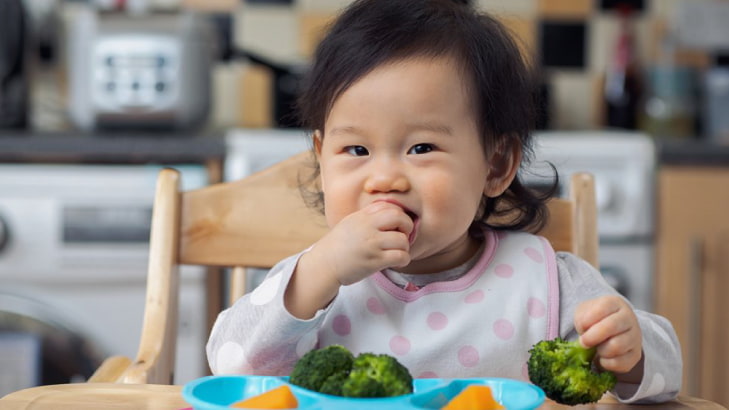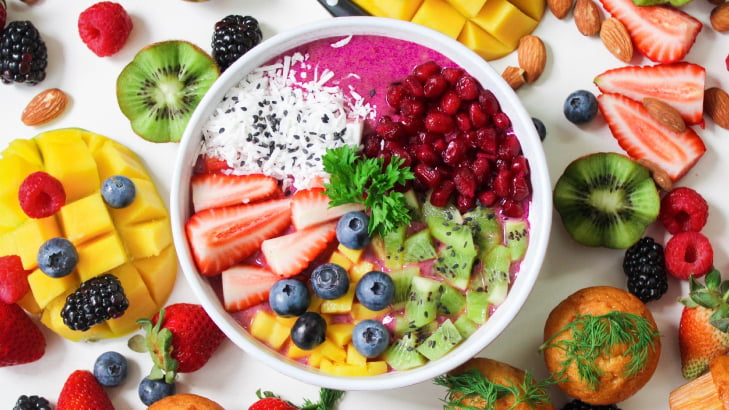By: Andrea Holwegner, Registered Dietitian
Being the parent or caregiver of a picky eater is tough. You want to expand their pallet but any food that isn’t on your child’s exclusive list of favourites tends to be rejected outright. Mealtime and snack time become stressful and you are likely worried that your little one isn’t getting the nutrients they need to be healthy. Many parents and caregivers end up giving in, reasoning that it’s better for their child to get at least some calories and nutrients from their favourite foods then to go hungry.
A lot of children are picky eaters, which can stress out parents, caregivers and children and cause strife. To help you weather this tricky time here are a few things to keep in mind.
Children’s Tastes Change
Your child’s favourite foods are bound to change and that means their other food tastes will change too. Even the pickiest adult eaters typically enjoy enough varieties of food to ensure they are getting the nutrients they need. Children’s likes and dislikes change constantly, which is why it is important to continue to expose your child to diverse foods and flavours. Many children often need to be exposed to a new food between ten and twenty times before they will eat it willingly.
If your child is adamant that they will never like a particular food you may want to try presenting it to them in a different way. Try different shapes, sizes and textures. If plain raw broccoli is a no go try it steamed, or serve it with a dip or hummus. Even if your child refuses to try anything with broccoli in it you should keep offering it to them. Children need to learn that meal times mean that sometimes we get our favourite foods and sometimes we don’t. If you continue to offer the same foods in different ways over time your children will likely surprise you.
Encourage Visual and Tactile Learning
Children love to be involved, to explore and to learn. This curiosity extends to food, especially since food preparation and consumption is both a visual and tactile learning experience. To help expand your child’s palette try and get them involved in all stages of the growing, selection, preparation and consumption of new foods.
Even young toddlers will likely be interested in what you are doing as you touch and prepare a variety of colourful vegetables and vegetables. Let them play with the fruits and vegetables, even if they make a mess. Sometimes making a mess is an essential part of learning to accept new foods.
Older children can help pick vegetables from the garden, or select fresh fruits and vegetables from the farmer’s market or grocery store. You can also try exposing your child to books and videos about how vegetables are grown and the wide variety of ways they can be cooked and served. Getting your child involved in the kitchen is also a great way to introduce them to new foods. There are a few simple tasks older children can help with in the kitchen such as:
- Letting your child stir the pot
- Letting your child help you measure ingredients
- Letting your child mix ingredients together
- Letting your child help assemble a casserole or lasagna
- Teaching your child how to form meatballs and delegating that task to them
- Letting your child be in charge of coating chicken, fish, or vegetables in bread crumbs
Your child may not always eat the new foods you prepare together, but the point of the exercise is to create a positive learning environment free from stress.
Provide Structure Without Pressure
While you may be tempted to fall back on favourite foods when your child rejects something new you should resist catering to their likes and dislikes. All parents and caregivers worry that their picky children aren’t getting a balanced diet, or that they aren’t eating enough food, but that doesn’t mean you should let your child dictate their diet. Offer your child a mix of favourite foods and less-favourite foods at each meal, as well as during snack time.
Childhood nutrition expert Ellyn Satter suggests that parents and caregivers provide structure, support and opportunities for learning. Let your child be involved in deciding how much of each food they are going to try. Even just one bite of an unwanted food is a small victory. This may mean that your child doesn’t eat a whole lot during some meals, but that is okay. You can take comfort in the fact that your child will be offered another structured and balanced meal or snack in a few hours.
Trying Doesn’t Mean Swallowing
A colleague of mine, registered dietician and pediatric nutrition specialist Sherene Sieben suggests that parents offer their child an out when they are faced with disliked or unfamiliar foods. Children need parental or caregiver permission to reject foods and you can offer them that by allowing them to spit out rejected foods politely into a napkin or place them in a separate no thank you bowl. She also suggests that there are multiple stages of progression when it comes to accepting new foods. These stages are:
- Sight
- Aroma
- Taste
- Texture
- Swallowing
Sometimes children progress through these stages quickly, but sometimes it takes a little more time and plenty of practice to get to the final stage.
Even the pickiest eaters will slowly expand their pallet if they are gently encouraged to do so, allowed to participate in the food selection and preparation process, presented with disliked or unfamiliar foods repeatedly and given an out to reject unwanted foods after they have tried them.







